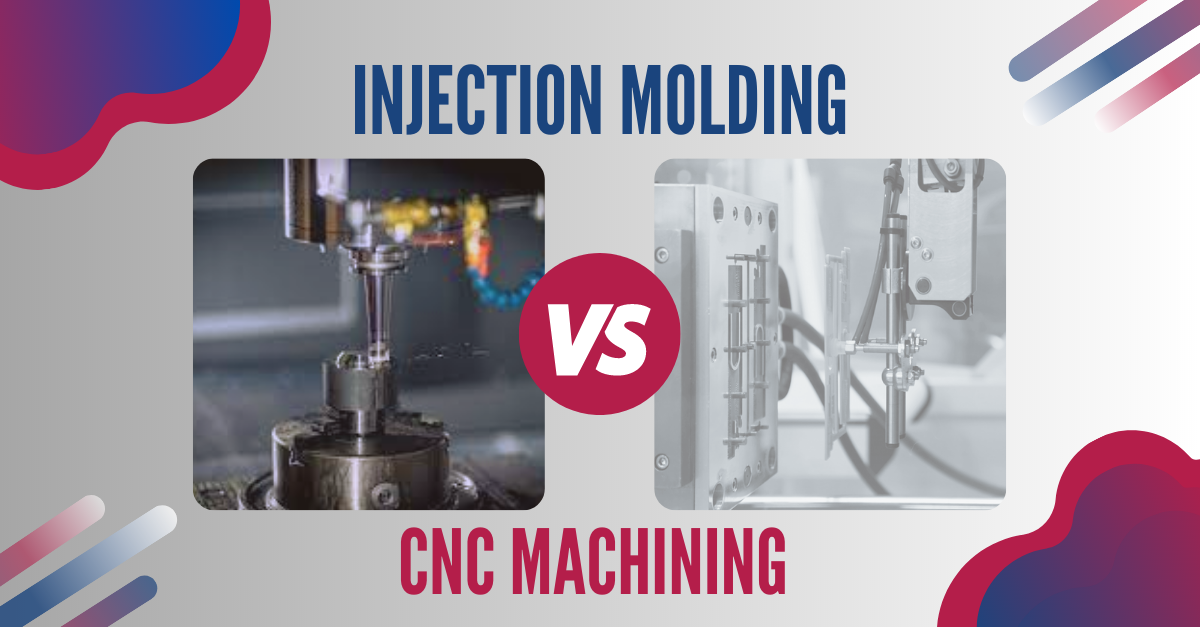In the world of manufacturing and product development on an industrial scale, choosing the primary production method is one of the most critical decisions in manufacturing your product. Two of the most prevalent options are injection molding and CNC machining, and choosing between them can be far from simple.
Both techniques have advantages and drawbacks that can manifest differently depending on the product. This article aims to comprehensively compare injection molding vs. CNC machining, diving into the specifics of each manufacturing technique to help you make an informed decision for your project.
👨💻Understand CNC Machining and Injection Molding
For a fair and informative comparison of CNC machining and injection molding, you must first understand what both techniques are, how they work, and their most common manufacturing applications.
Differences in Process and Material Selection
To start, what is CNC machining? It's considered a subtractive manufacturing process, removing material from a larger piece to carve out a specific design or part. The process is computer-guided and can be adapted to various materials and levels of detail. Additionally, router heads can be switched out to work with different materials such as metal, plastic, wood, etc.
In contrast, injection molding is considered an additive process because the raw material is formed directly into the shape of the final product, producing minimal waste or excess. Injection molding involves heating a specially designed thermoplastic into a liquid state and then injecting it into a mold of the desired design.
The material is then left to cool and solidify before it’s ejected. This technique can be adapted to a wide range of thermoplastic polymers, elastomers, and even metals.
Advantages and Limitations of Each Manufacturing Method
CNC machining has several benefits. For one, it offers high degrees of precision and design fidelity, allowing you to produce parts with complex designs with a low fault tolerance. For another, CNC machining is ideal for both prototyping and production. However, it is considerably more costly per unit than the alternative, and it can be slow and inefficient for large-volume parts manufacturing.
Plastic injection molding excels at high-volume, low-cost production. Certainly, the up-front cost of having the molds made can be an obstacle, but the price per unit is significantly lower as production volumes climb higher. Like CNC machining, you can create complex designs and shapes and guarantee consistency among manufactured parts.
Application and Product Considerations for Choosing the Right Method
Another factor when choosing between CNC machining and injection molding is the type of product you’re looking to manufacture and the manufacturing volume. CNC machining may be the more suitable option for smaller quantities with many precise and intricate parts.
But if you’re producing many plastic parts, CNC machining services may be far too expensive and time-consuming, and you should opt for plastic injection molding instead.
The material of your end product also plays a key role in your decision. CNC machining can work with a much wider variety of materials, from wood and metal to plastic and acrylic. Injection molding is limited to thermal material that can be heated, liquefied, and poured effectively into molds. This limits its applications to specific types of plastics, flexible type rubber-like materials.
👉CNC Machining for High-Precision and Low-Volume Production
CNC machining excels where high precision is paramount, and production volumes and timelines are minimal. It’s a reliable method for repeatedly producing lower quantities of parts with complex designs and tighter tolerances for error compared to other manufacturing techniques. It also allows you to choose from a much wider variety of materials depending on the final product.
The cost of CNC machining is limited to the upfront payment of the machine and its maintenance, but it can be used repeatedly at a much lower cost. Plus, the finished products rarely need additional processing — like smoothing out the edges, further reducing costs and time.
👍Injection Molding for High-Volume and Mass Production
For high-volume mass production of parts, injection molding is second to none. Despite the higher up-front costs that might recur for every new design or worn-out mold, the total cost of production per unit is still significantly lower for larger-quantity production than CNC machining. This makes it economically advantageous, as the process is considerably faster, allowing you to produce anywhere from hundreds to thousands of parts per hour with high repeatability.
Older molds can be adjusted or used in newer designs and models, saving you from starting from scratch. This also enables you to better adapt to market changes, with new products ready to roll out as soon as needed.
💯Partner With an Expert for Your Custom Plastic Components of Devices
Choosing a production method isn’t a decision to take lightly. It’s crucial to research and understand each manufacturing technique's advantages, limitations, and applications. Luckily, partnering with an industry expert can streamline this process for you and guarantee better outcomes.
This is where Crescent Industries comes in. We’re an employee-owned and USA-based production company specializing in injection molding manufacturing. Our experts offer you access to integrated, single-source solutions for all your custom-molded components. We also use our advanced engineering capabilities to design comprehensive plans for manufacturing injection molds in various rigid and flexible materials.
With our extensive experience in injection molding and CNC machining, we’ll ensure you receive the guidance you need to make an informed decision. Learn more about our approach to custom injection molding and how we can adapt our solutions to your needs.


